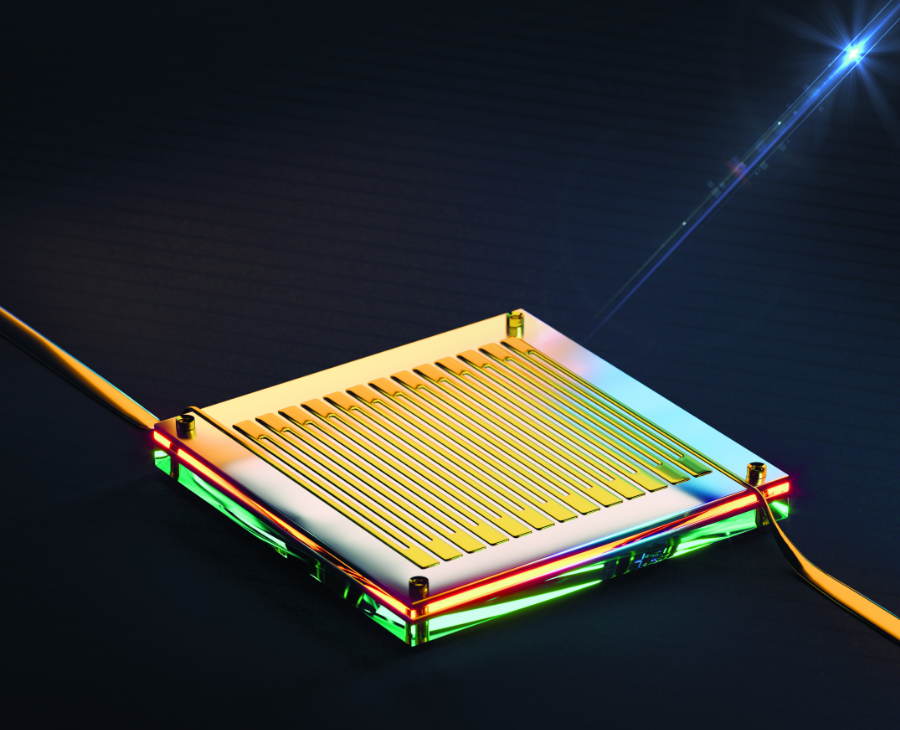Quantum sensors boosted by high-temperature superconductors
Using high-temperature superconducting nanowires, single-photon detectors can now be operated at elevated temperatures, making them more useful for a wide range of applications.

As elementary constituents of light, photons have an enormous potential to revolutionize communication technology. In quantum networks, these particles act as flying qubits—the basic building blocks of information in such systems—and can be transmitted over long distances via fiber optic cables, enabling secure quantum communication.
Scalable and efficient quantum networks rely on sophisticated components such as superconducting nanowire single-photon detectors (SNSPDs). Now, an international team of researchers has published an article in Nature Nanotechnology (DOI: 10.1038/s41565-023-01325-2, first author: Ilya Charaev from the group of Prof. Schilling), reporting a groundbreaking milestone in the field of SNSPDs.
The team has studied in detail the materials used to build such photon detectors and fabricated novel light sensors from two cuprate compounds. These high-temperature superconductors belong to the class of materials discovered in 1986 by Karl Alex Müller at our institute and Georg Bednorz at IBM Zurich, an achievement that was awarded the Nobel Prize. By using such high-temperature superconductors, it is now possible to operate the detectors at elevated temperatures, which has long been a challenge in the field.
This breakthrough brings several benefits, including reduced cooling requirements, longer operating lifetimes, and improved performance, expanding the potential applications of SNSPDs in fields ranging from quantum cryptography to medical imaging at affordable cooling costs.
Photo Credit: Maxim Karmantsov (MMDES)
Reference: https://www.nature.com/articles/s41565-023-01325-2